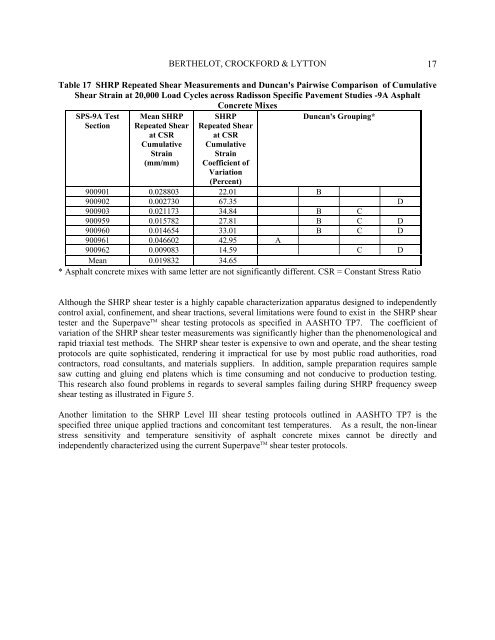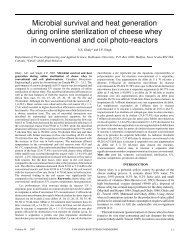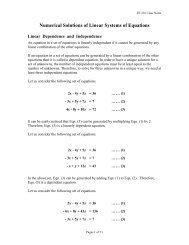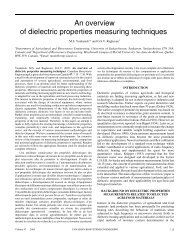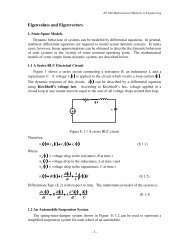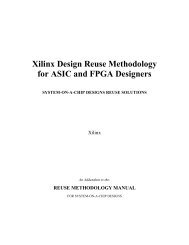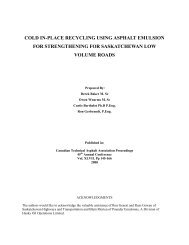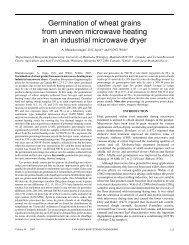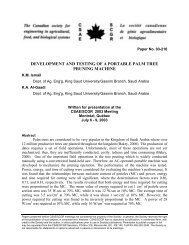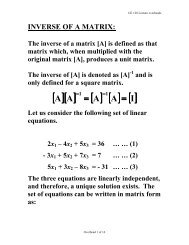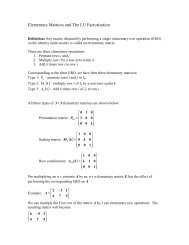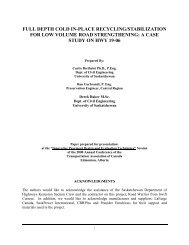comparison of alternative asphalt concrete rut characterization
comparison of alternative asphalt concrete rut characterization
comparison of alternative asphalt concrete rut characterization
You also want an ePaper? Increase the reach of your titles
YUMPU automatically turns print PDFs into web optimized ePapers that Google loves.
BERTHELOT, CROCKFORD & LYTTON 17Table 17 SHRP Repeated Shear Measurements and Duncan's Pairwise Comparison <strong>of</strong> CumulativeShear Strain at 20,000 Load Cycles across Radisson Specific Pavement Studies -9A AsphaltConcrete MixesSPS-9A TestSectionMean SHRPRepeated Shearat CSRCumulativeStrain(mm/mm)SHRPRepeated Shearat CSRCumulativeStrainCoefficient <strong>of</strong>Variation(Percent)Duncan's Grouping*900901 0.028803 22.01 B900902 0.002730 67.35 D900903 0.021173 34.84 B C900959 0.015782 27.81 B C D900960 0.014654 33.01 B C D900961 0.046602 42.95 A900962 0.009083 14.59 C DMean 0.019832 34.65* Asphalt <strong>concrete</strong> mixes with same letter are not significantly different. CSR = Constant Stress RatioAlthough the SHRP shear tester is a highly capable <strong>characterization</strong> apparatus designed to independentlycontrol axial, confinement, and shear tractions, several limitations were found to exist in the SHRP sheartester and the Superpave TM shear testing protocols as specified in AASHTO TP7. The coefficient <strong>of</strong>variation <strong>of</strong> the SHRP shear tester measurements was significantly higher than the phenomenological andrapid triaxial test methods. The SHRP shear tester is expensive to own and operate, and the shear testingprotocols are quite sophisticated, rendering it impractical for use by most public road authorities, roadcontractors, road consultants, and materials suppliers. In addition, sample preparation requires samplesaw cutting and gluing end platens which is time consuming and not conducive to production testing.This research also found problems in regards to several samples failing during SHRP frequency sweepshear testing as illustrated in Figure 5.Another limitation to the SHRP Level III shear testing protocols outlined in AASHTO TP7 is thespecified three unique applied tractions and concomitant test temperatures. As a result, the non-linearstress sensitivity and temperature sensitivity <strong>of</strong> <strong>asphalt</strong> <strong>concrete</strong> mixes cannot be directly andindependently characterized using the current Superpave TM shear tester protocols.


